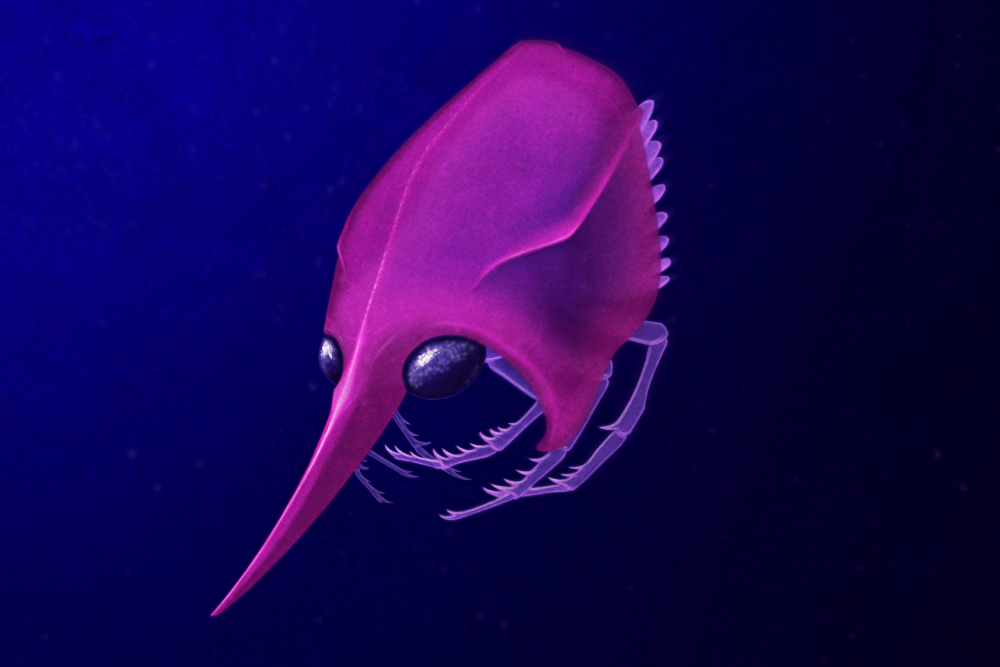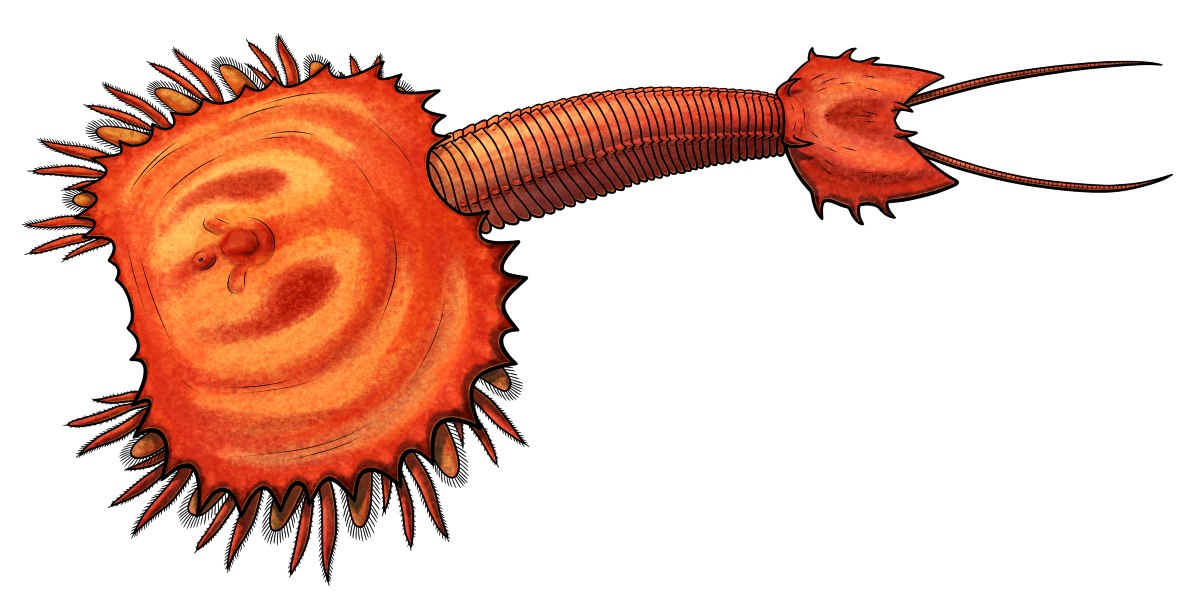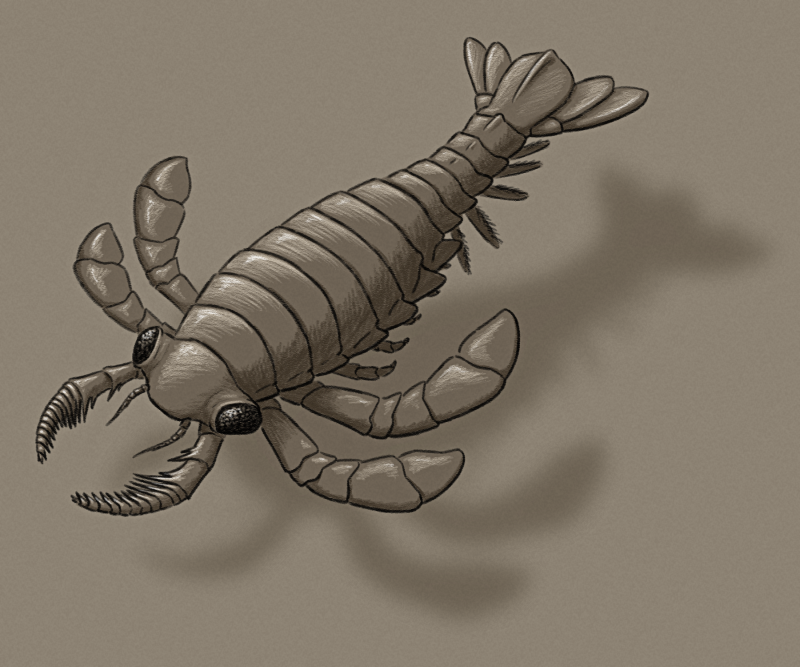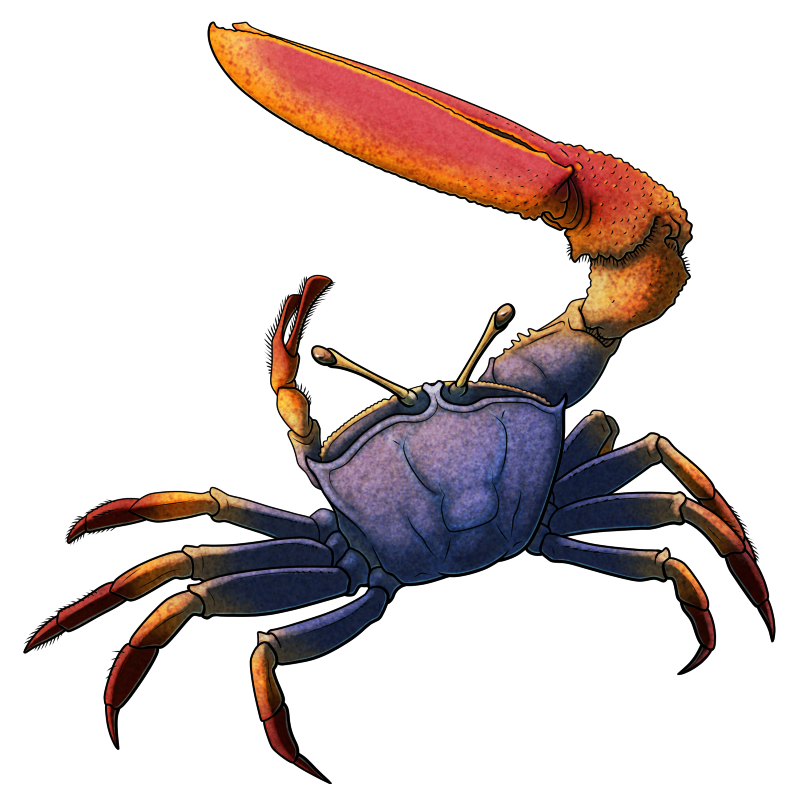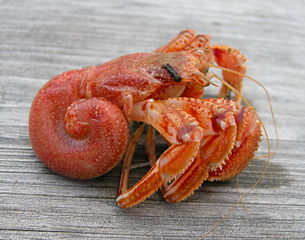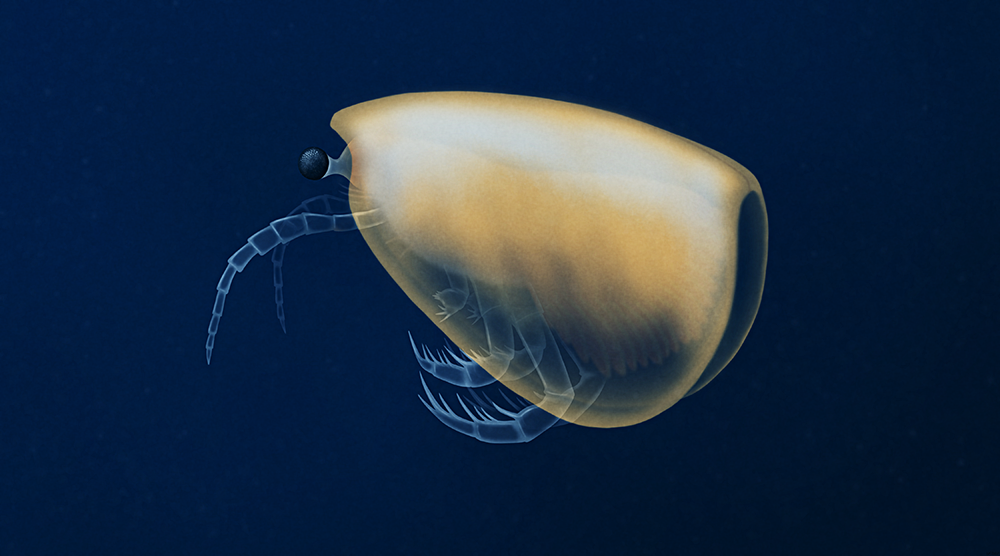The enigmatic thylacocephalans were a group of bizarre little arthropods, found in marine deposits all over the world from the late Ordovician (~435 million years ago) to the late Cretaceous (~85 million years ago). They had shield-like bivalved carapaces, large compound eyes, three pairs of spiny grasping limbs, and multiple pairs of small paddle-like swimming limbs, but details of their internal anatomy are poorly known and their evolutionary relationships to other arthropods are still very uncertain.
Traditionally they’ve been classified as crustaceans, possibly as close relatives of remipedes or malacostracans – but they’ve also recently been proposed as instead being part of a much more ancient branch of arthropods, potentially related to stem–mandibulates like Acheronauta.
Falcatacaris bastelbergeri was a thylacocephalan living during the late Jurassic, about 150 million years ago, in what is now Germany. Around 2.5cm long (~1″), its carapace had tiny interlocking square “teeth” resembling a zipper along the hinge line between the two valves, a ridge along each side, and a long pointed knife-shaped spine at the front.
Like other thylacocephalans it was probably a swimming predator, likely nocturnal or hunting in murky conditions based on its enlarged eyes, and would have captured smaller aquatic prey using its raptorial limbs.
Continue reading “Falcatacaris”
